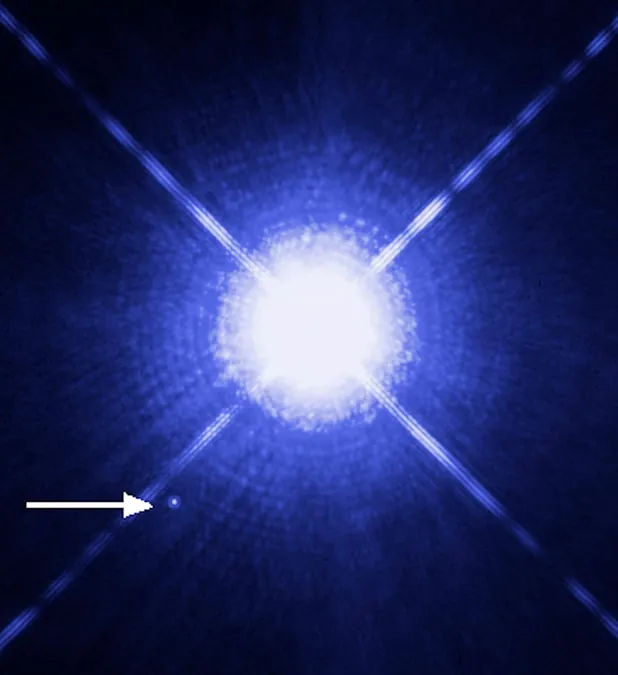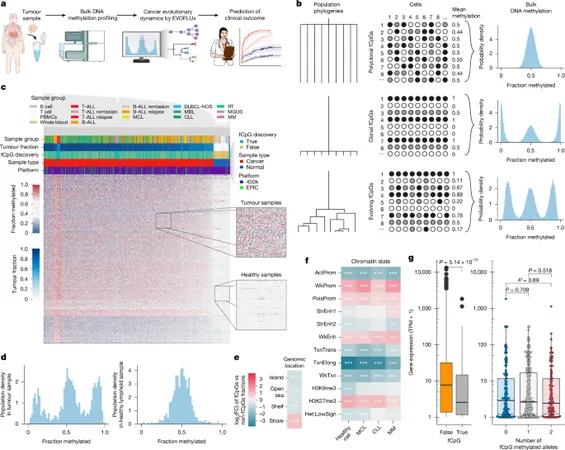
Galactic Whirlwinds: Meet the Universe's Fastest Stars!
2025-09-11
Author: Li
Picture this: the remnants of stars that once shined as brightly as our Sun are now dense cosmic corpses—welcome to the world of white dwarfs! These remnants pack the mass of the Sun into a sphere no bigger than Earth, making them incredibly dense. Just a teaspoon of one could weigh as much as a car!
The Explosive Dance of Hybrid White Dwarfs
While many white dwarfs fade away quietly over billions of years, others meet a dramatic fate. A groundbreaking study led by Dr. Hila Glanz from Israel's Technion Institute delves into the rare "hybrid" white dwarfs—those composed of helium, carbon, and oxygen. With the help of sophisticated simulations, researchers explored what happens when two of these stellar remnants collide.
The cataclysmic merger of two hybrid white dwarfs results in a spectacular explosion. In this cosmic clash, the lighter star gets partially shredded, while its heavier counterpart undergoes what is known as a “double detonation explosion.” The aftermath? A cosmic slingshot effect that can propel the leftover debris of the lighter star into the void at jaw-dropping speeds exceeding 2,000 kilometers per second! That's fast enough to break free from our entire galaxy and zoom into the vast unknown of intergalactic space.
Solving the Mystery of Hypervelocity Stars
This astonishing discovery sheds light on the enigma of hypervelocity white dwarfs like J0546 and J0927. These stellar travelers have been zipping through our galaxy's outskirts at astonishing speeds and unusually high temperatures that defy existing models. As Dr. Glanz pointed out, "This is the first time we've seen a clean pathway where the remnants of a white dwarf merger can be launched at hypervelocity."
Unraveling the Secrets of Supernovae
But that's not all! These explosive events also give rise to a new category of supernovae, which are fainter than their more traditional counterparts. Understanding these unusual supernovae will enable astronomers to use them as “standard candles” in measuring cosmic distances and the mysterious energy accelerating our universe.
While classic Type Ia supernovae are known for their consistent brightness, these hybrid white dwarf explosions produce a new class of underluminous supernovae that are dimmer and unlike anything we’ve seen before.
A Future Full of Cosmic Discoveries
With powerful surveys like the Vera Rubin Observatory on the horizon, and future data releases from Gaia, astronomers are set to uncover even more of these stellar remnants speeding through space. Each discovery offers a unique opportunity to delve into the violent processes of stellar death and rebirth, enhancing our understanding of cosmic chemistry and the fundamental laws of the universe. Buckle up—space is about to get even more thrilling!



 Brasil (PT)
Brasil (PT)
 Canada (EN)
Canada (EN)
 Chile (ES)
Chile (ES)
 Česko (CS)
Česko (CS)
 대한민국 (KO)
대한민국 (KO)
 España (ES)
España (ES)
 France (FR)
France (FR)
 Hong Kong (EN)
Hong Kong (EN)
 Italia (IT)
Italia (IT)
 日本 (JA)
日本 (JA)
 Magyarország (HU)
Magyarország (HU)
 Norge (NO)
Norge (NO)
 Polska (PL)
Polska (PL)
 Schweiz (DE)
Schweiz (DE)
 Singapore (EN)
Singapore (EN)
 Sverige (SV)
Sverige (SV)
 Suomi (FI)
Suomi (FI)
 Türkiye (TR)
Türkiye (TR)
 الإمارات العربية المتحدة (AR)
الإمارات العربية المتحدة (AR)